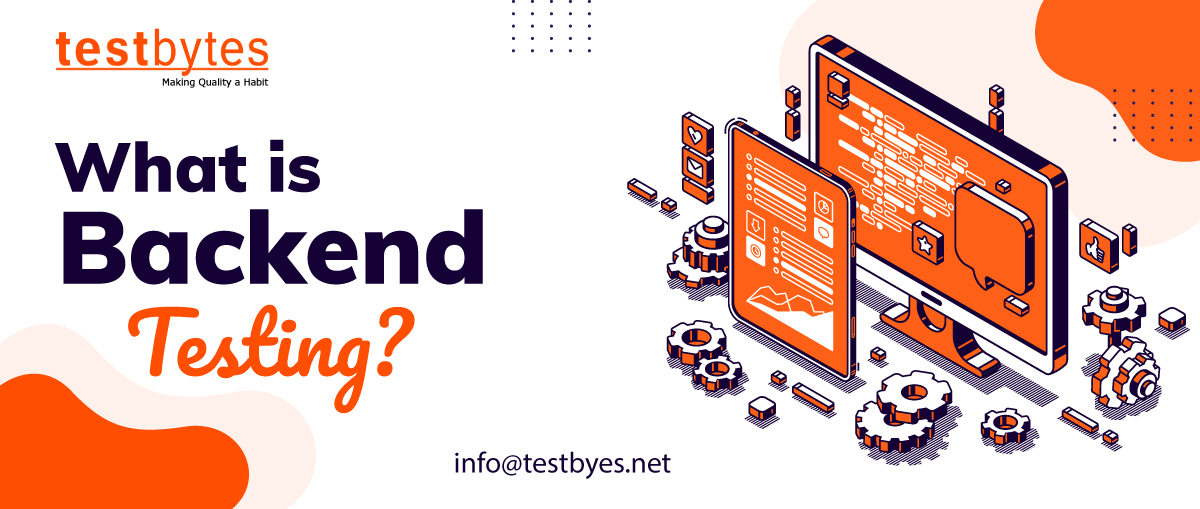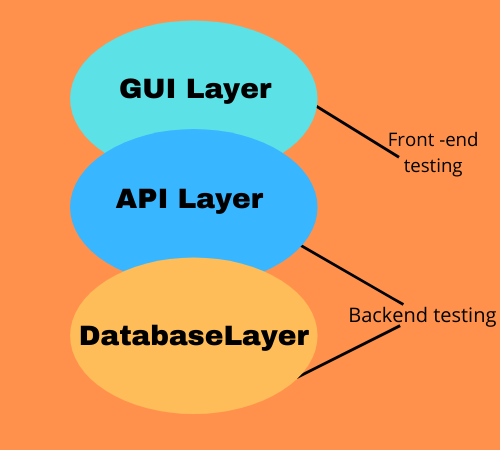


The backend testing ensures that your application works fine at the server-side and it assures the quality of the database.
The data that we enter in the front-end, is finally stored at the backend, using one of the many available databases like MySQL, Oracle, SQL Server, etc.
Assuring that the data we enter is properly and timely stored and retrieved from the database is done by backend testing.

#1) Interfaces: interfaces are those that allow you to execute your queries for the database like TOAD, PHPMyAdmin, etc.
#2) DB load and performance benchmarking tools like SLOB, hammerDB, etc.
Data is an important aspect of all computer applications. Most of the applications are loaded with a huge amount of data.
If you own a data hefty software, testing the backend becomes very vital for you. Assuring that data is properly stored and retrieved when required is very important to assure the best quality of your product.
Not only that, data security, accuracy, integrity, etc. are also major concerns of all the software.
Failing in either of your software can fail miserably in the market. the process also prevents complications like data corruption, deadlock, data loss, etc.
1. Helps you test databases, servers, and API.
2. It detects bugs at an early stage thus reducing the cost of fixing them.
3. Help you test your application more comprehensively, providing you complete control over the test coverage.
4. Evade deadlock and data loss issues.
5. Enhances the system’s functional constancy and sturdiness.
6. Enhances data quality.
• To conduct manual backend testing you are required to have deep database knowledge.
• It can add to your organizational cost.
Backend Testing Validation Mechanism:
Backend Testing includes validating Keys and Indexes, Sequence testing, data integrity testing, Stored procedures testing, Database server validations, Functions testing, Performance check, Database tables, Triggers, etc.
Skills Required For Backend Testing:
Being a backend tester, you should have a good knowledge of database concepts like normalization and SQL queries for backend testing.
Backend Testing Elements:
Depending upon the features of your application, backend testing may include many communication protocols, network configurations, databases, servers, etc.
Backend Database Testing
The database is an important part of your application. Seamless interaction between the GUI and the database is very important for the proper working of your application.
Any kind of discrepancies can cause performance bottlenecks and security issues. Hence Backend database testing is the most important.
How to do Backend Testing?
The process is no different from other types of testing and follows more or less the same procedure
• Prepare a testing strategy, test plan, test cases, and set up an environment.
• Execute test plans.
• Calculate the results.
• Validate the results with anticipated results and the business requirements.
• Report any defects or any issues.
For example, if we consider a train ticket booking website, it asks users to create their profile and also uses various online payment methods to book train tickets.
These websites use backend testing to assure the highest security and efficient working. The process ensures that profile information like name, address, payment method, etc. are stored in their designated database tables and no information is missed.
A proper test should be carried out to ensure that the data are timely and correctly retrieved. For all the monetary transactions, ACID properties should be properly tested.
Backend Testing Tools:
Here are some of the tools used for the process
• Data Factory
• Data Generator
• Test Data Generator
• AETG
• TurboData
While performing the process, many testers generally make a few mistakes to reduce the testing cost. Dealing with such issues is very important. Here is how
it is not very easy and requires good knowledge of databases. if your team is not very skilled and efficient they might end up doing only black-box testing, which can lead to inadequate coverage and can leave many bugs undetected.
Hence always rely on an experienced and skilled backend tester who has a good knowledge of databases and can accurately cover the test cases and can also perform white box testing.
So, your solution is easy to hire an experienced backend tester.
To save time and effort, testers many times depend on simulated data for testing, this can lead to many bugs being unidentified. Hence it is always advised to use more realistic data, which can save you a lot of cost of finding bugs at a later stage and fixing them.
Companies many times pick up any automation tool without realizing the cost it can incur in the future. To save costs they many times pick free tools that might not be suitable for their testing requirements. Such scenarios can lead to unrealized costs at the later stages. Hence it is advisable to make a wise choice of your automation tool.
Focus areas when testing a database in backend testing
While testing a database, apart from checking the connections and the security, here are the other things that must be included in your tests.
API Backend Testing
In the most simple terms, an API is an interface that offers some sort of service to another application or software. API testing is also a form of backend testing since we do not need a UI to test these and they are triggered when one or more actions are performed on the UI.
For testing the API, we need to know the endpoints where these APIs hits when called, the expected response code, the number of retries, and the error message returned for an unsuccessful call. All these parameters are tested as part of the API testing.
Some tools commonly used for API automation and testing are:
Communication is an important factor while conducting backend testing. There should be an open and free flow of communication between the team so that testers have a clear picture of what changes and additions are made to the database. Poor communication can lead to testers missing on many test cases that could have evolved with the changes in the database, hence leading to inadequate testing.
Testing backend involves databases that many times are very vast. Getting a clear insight into these databases and gathering requirements to build test cases can be a daunting task especially when databases are very big.
When an application is passed on to the testers for testing, the data in the database is generally very small. It is sufficient only to execute the application. Hence it becomes a challenge for the testers to test the application.
Changes in databases are very frequent. But it throws a big challenge to the testers testing the application. Supposedly they have prepared the test cases and are executing their test as per their designed test plan and test cases and in the midway, there occurs a database change, which can create many challenges for the tester. So with every structural change in the database, the testers have to modify their test cases to ensure proper testing. Not only that they will also have to rework the test data.
Another big challenge in the process is that you cannot run multiple test cases simultaneously as it can decrease the performance of your application and can underrate its performance.
It’s is a complex task having to deal with complex databases. Hence, involving complex test plans. It should be ensured to keep test plans as simple as you can.
The process requires you to have a good understanding of SQL, which can help in proper and accurate testing.
|
Backend Testing |
Front-end Testing |
|
1. It is performed on the database or servers |
1. It is always performed on the application GUI |
|
1. To test the backend, a tester must have good knowledge of SQL, dB connections, and database fundamentals |
2. To test the front end, a test needs to know the business and functionality of the application. |
|
2. There should be sufficient data in the database before the testing can be done |
3. It can be performed with minimum data in the system. |
|
3. No GUI is required to perform a backend test |
4. GUI is mandatory to perform frontend tests. |
|
4. Types of backend tests are SQL tests, dB tests, API tests, etc |
5. Types of frontend testing are functional tests, unit tests, regression tests, smoke tests, etc. |
|
5. The main aim is to check the integrity of data if it is stored correctly, accessible as per need, any loss, etc. |
6. The main aim is to verify the functionality of the application as the customers would use it. |
Conclusion
Through backend testing, you can check the ACID properties, schema, etc. The most astounding feature of back end testing is that you don’t require the help of a GUI. You can directly inject data to the database with the help of a browser.
Database testing also helps in testing the business logic of an app. If you wish to know more about why your app needs and how it’s beneficial from a business perspective you can talk to us.